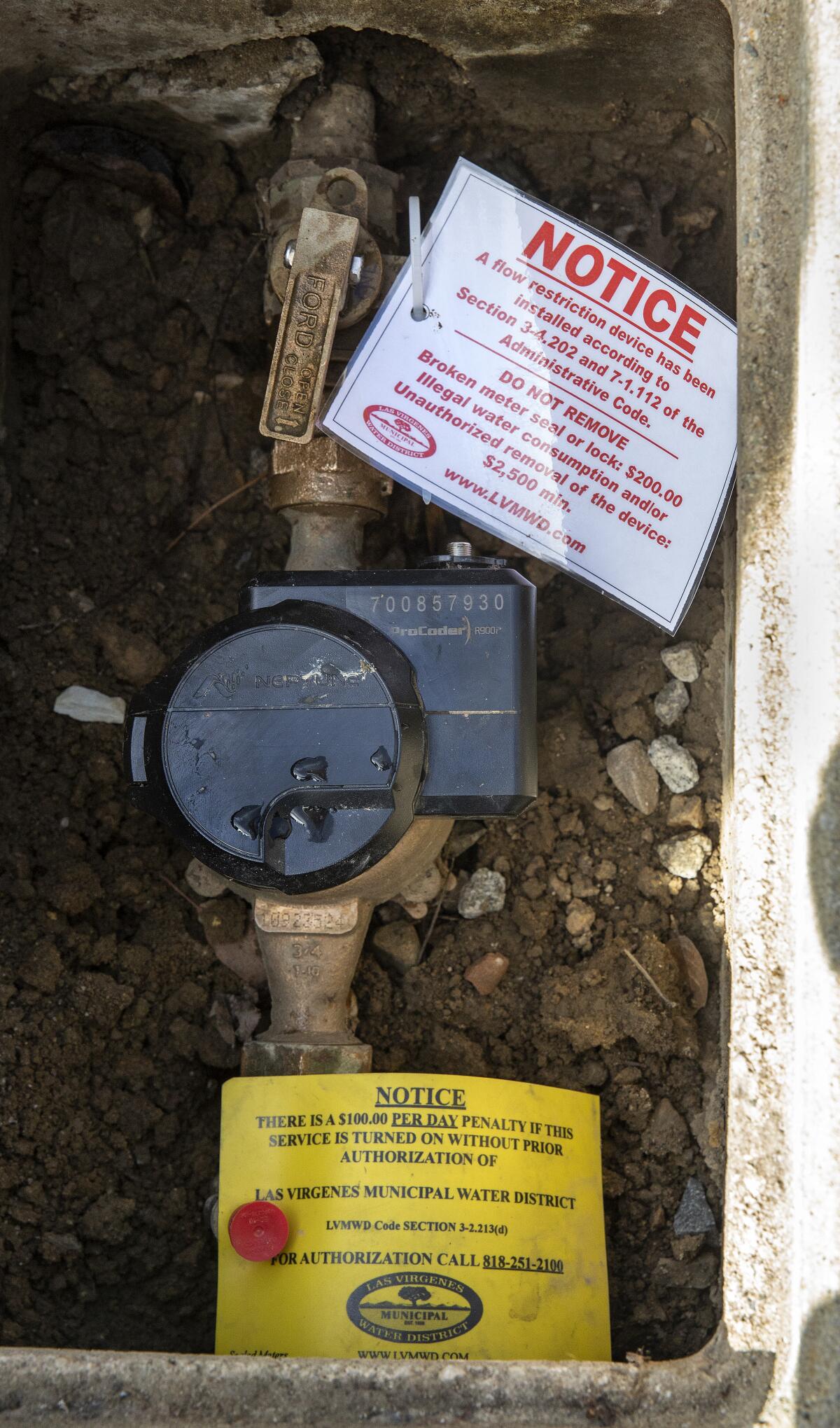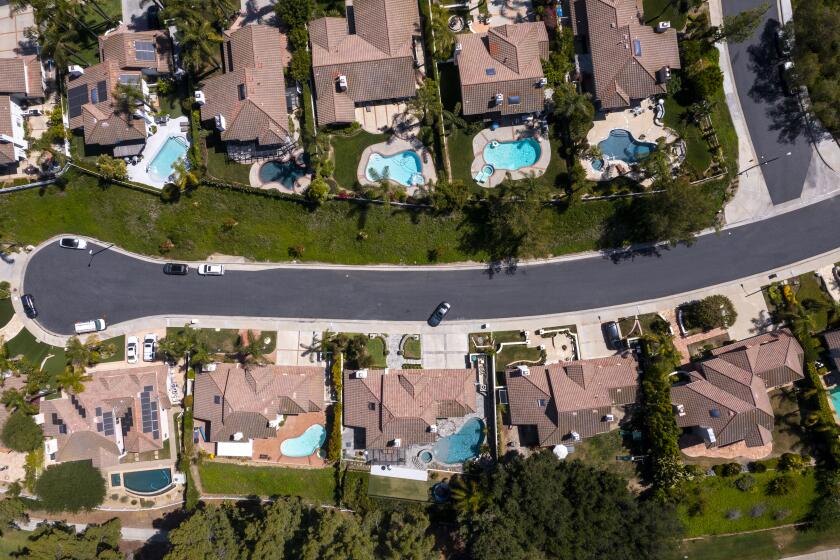Think you can cheat water restrictions? This tiny disk will tame the thirstiest water hogs

- Share via
It’s only the size of a silver dollar, but this tiny metal disk can tame even the biggest of Southern California water hogs.
In an indication of just how dire drought conditions have become, the Las Virgenes Municipal Water District has unveiled a custom-built device that will drastically reduce water flow to customers who refuse to abide by newly enacted water restrictions.
Designed to be installed at the main shutoff valve of a home or business, the small, metal washer has a center aperture that measures just one-sixteenth of an inch in diameter. When fixed in place, the device slashes water flow from 30 gallons per minute to less than one gallon per minute.
Although the kitchen faucet works just fine, showers may become unsatisfactory for those accustomed to high water pressure, and lawn sprinklers become effectively nonfunctional. And that’s exactly the point.
The flow restrictor allows for “sufficient indoor use and not sufficient outdoor use,” said Cason Gilmer, a senior field customer service representative for the water district. Gilmer took charge of designing the device after district employees couldn’t find an existing flow restrictor that did what they wanted.

Las Virgenes, which serves about 75,000 residents in western Los Angeles County, relies on the State Water Project, a Northern California water supply that officials say is dangerously low after the state’s driest-ever start to the year. The district includes the communities of Agoura Hills, Hidden Hills, Westlake Village and the celebrity enclave of Calabasas.
The district is also one of the top water users in the state. Last year, customers used an average of 205 gallons per person per day, according to David Pedersen, the water district’s general manager. Under new drought restriction rules that took effect June 1, regional water officials hope to ratchet down usage to about 80 gallons per person per day.
Most of the district’s water is used outdoors — about 70% — and this usage can be seen in the lush landscaping that fills the frontyards of many of the homes.
When the Metropolitan Water District of Southern California announced its harshest water restrictions for millions of residents across the region, Las Virgenes staff recommended that residents water their lawns just one day per week. Officials expect that will be a hard pill to swallow for some.
In the land of multimillion-dollar homes, the question of water conservation plays out differently than in the neighborhoods where the rest of us live.
The flow restrictors may be implemented for customers who have not reduced their water usage from December 2021 and have exceeded 150% of their monthly water budgets at least four times. Each customer’s water budget varies, and is based on such factors as the number of people in a residence, the amount of irrigated land and the time of year.
The first installation would leave the flow restrictor in place for at least two weeks and up to a month. Any future installations would stay in place progressively longer. Tampering with the restrictor would incur a $2,500 fine and other fees for reinstallation.
Currently, 1,609 customers use enough water to warrant a flow restrictor, Pedersen said, but the district doesn’t plan on installing that many.
On Wednesday, staff visited 20 homes that were the highest percentage over budget — 200% to 300%. Only four water restrictors were installed, however. The other 16 customers signed water usage commitment forms promising to mend their ways.
“So what we’re trying to do is have a path for them to get their water use under control,” Pedersen said. “We’re trying to help our customers do the right thing, we’re not trying to be punitive.”
The form includes having a water survey completed by district staff at the customer’s home to identify where water can be saved, installing a weather-based irrigation control device, and acknowledging the drought and water supply conditions.
It also allows the customer four additional monthly exceedances of their water budget before installation of the flow restrictor to give them time to reduce their water usage, Pedersen said.
The district plans to go down the list of the highest water users and visit 20 additional homes each week.
While the flow restrictors are a solution of last resort for reducing heavy usage, district officials are also thinking long-term, which is why they’re focusing on outreach and public education when visiting customers.
Many people don’t even realize how much water they’re using or how to check their water meter, Gilmer said. The district has been installing smart meters for customers since last June. The meters will provide water use data in hourly increments rather than monthly. Installation should be finished by August.
“The idea is for people to change their behavior and what their relationship is with water in order for us to collectively be successful,” said water district spokesperson Mike McNutt.








